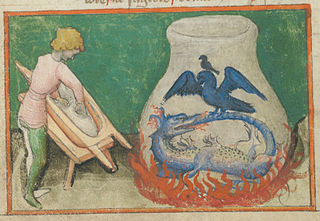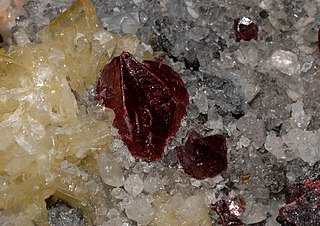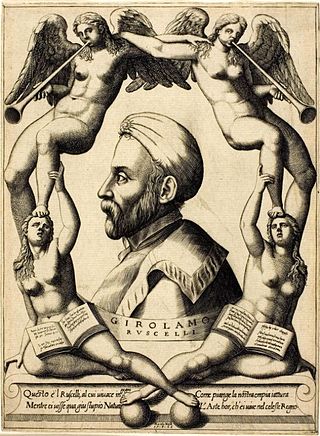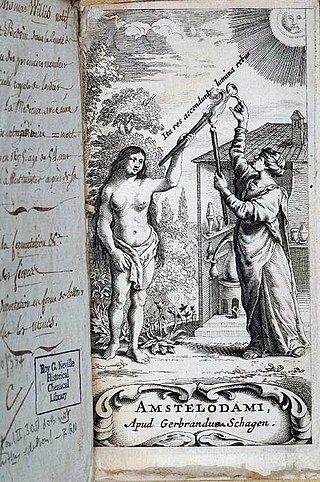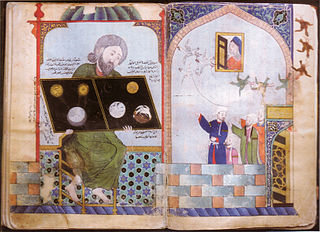The Secrets of Lady Isabella Cortese
In 1561, her book I secreti della signora Isabella Cortese or The Secrets of Lady Isabella Cortese first appeared in print in Venice, introducing alchemy to a wider readership. These books belonged to the genre "books of secrets." This genre gained notoriety around the 17th century. [11] The said secrets of Isabella Cortese would more closely be referred to as home remedies in society today. Many of these secrets were considered to be proven medical remedies and everyday cure-alls. Experiments that were considered highly effective or had a high success rate, however, could be used as an exchange of goods or as a way to pay off debt and in some instances could even help one jump into a higher social standing or class. Many of these remedies, over time and by different cultures, would change and become highly sought after and prized within their given community. Apart from medical and cosmetic remedies, other uses show advice for how to run a household, and also discussion of how to turn metal into gold. [12] These included instruction on how to make many practical items such as toothpaste, glue, polish, soap, and cosmetics. [8] One treatment calls for a combination of fixed camphor, quicksilver, and sulfur to make a "universal medicine" through a metaphorical joining of mind, body, and soul. [8] Another calls for a mixture of quail testicles, large winged ants, oriental amber, musk, and an oil made from elder and storax. [8] This mixture was a supposed treatment for erectile dysfunction. As long as all instructions are followed exactly, the book claims all of its secrets will be known to the reader. [9] The book showed much about unknown parts of nature and how they can be used medicinally. [13] The recipes provided in the content of the work were divided into four distinct books focusing on many different viewpoints that applied to either males or females. The first book illustrates the idea of medicinal recipes and elaborates on ways to treat the main diseases spreading through Europe at the time. [1] These include remedies for diseases like syphilis or ways to cure the common plague. [1] Additionally, this portion heavily promotes the general way of healing wounds through means of alchemy with processes including distillation or other potential ways relating back to alchemy. [1] The second book focuses more on how to produce substances like gold or elixir as mentioned before. [1] Moreover, there are common rules that Cortese suggests for readers in this section before moving forward like working alone, making use of vessels, immersing oneself with familiarity of alchemical experiments, keeping eyes on fire, preparation in the use of tongs, secrecy in all work, find trustworthy allies, and praising God after success of an experiment by serving the less fortunate. [1] Once these rules were established, directions on ways to alter properties of metals were introduced, such as changing copper to gold. [1] The third book has broader coverage, including topics that drew much attention such as assembling mirrors, dying hair, and removing stains. [1] The final book is directed towards women through beauty. It investigates the practice of enhancing beauty though creams, powders, hair dye, and oils. [1]
Cosmetic recipes attributed to Isabella Cortese

Isabella Cortese mentions several recipes in her book that are quite intriguing. [4] Although Cortese worked in alchemy, she also focused on cosmetic transformations to the female body very similar to what we know today as cosmetology. These transformations require recipes made up of ingredients that many might question today.
For instance, there is one recipe for face color that is made as follows: Obtain a few birds with white feathers. During the duration of the next week to two weeks feed them only nuts from the pine. Then, after the one to two weeks are over, take the birds and butcher them. After butchering the birds mix the liquid obtained and some portions of the bird with a small amount of sweetbread and also a small portion of white bread as well. Next, add some goats milk and heat the solution. Once finished heating, distill the final product that will be applied to the face. [4] This final product should help improve one's pale complexion while also revealing one's true skin tone.
Furthermore, there is a different recipe engraved in her "book of secrets" that is called to help cleanse and detoxify one's face. The recipe is as follows: First, gather some lemons beans; be sure the beans are dried. Then, once you have mixed the two add the mixture into a container full of white wine. When done, gather up some honey, a few eggs, and a couple ounces of goat milk. Combine all of these ingredients together and then begin to distill the mixture. [4] This final mixture can be applied to help rid the face of toxins and harmful chemicals that usually either dry up one's face or make it extra oily. These are just two of the most interesting recipes that are attributed to Cortese. Whether or not these recipes worked was determined by the beauty standards of 16th-century Europe. By contrast, today's world of cosmetology deals with many different shades of melanin, different types of skin, different hair textures, and different opinions of beauty for people from all over the world.
Reception
In its time, The Secrets of Lady Isabella Cortese was quite popular. It was published in eleven editions between 1561 and 1677, as well as two editions of a German translation. [8] Part of this success can be attributed to Cortese's insistence on her readers keeping her book's secrets to themselves. [8] She asked her readers to keep people away from their alchemical workplace and to burn her book once they had learned all of its secrets. [8]
